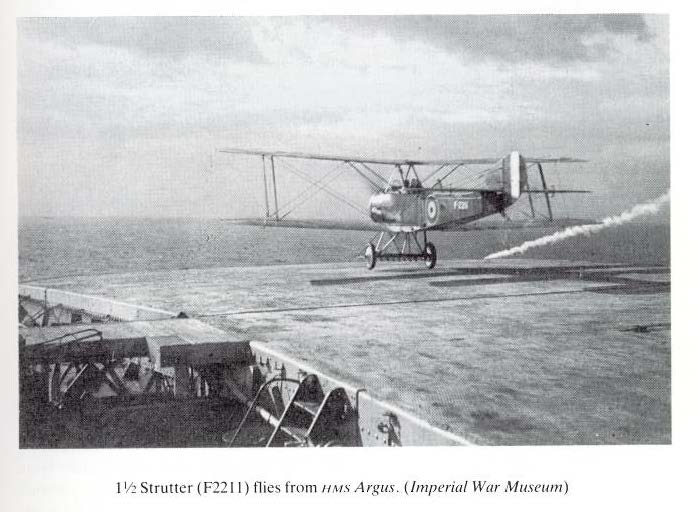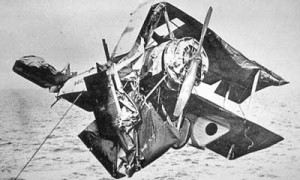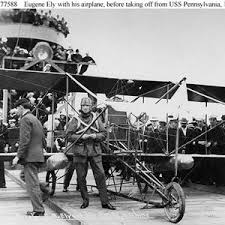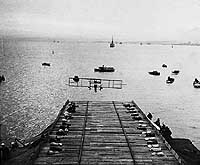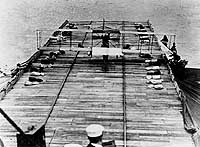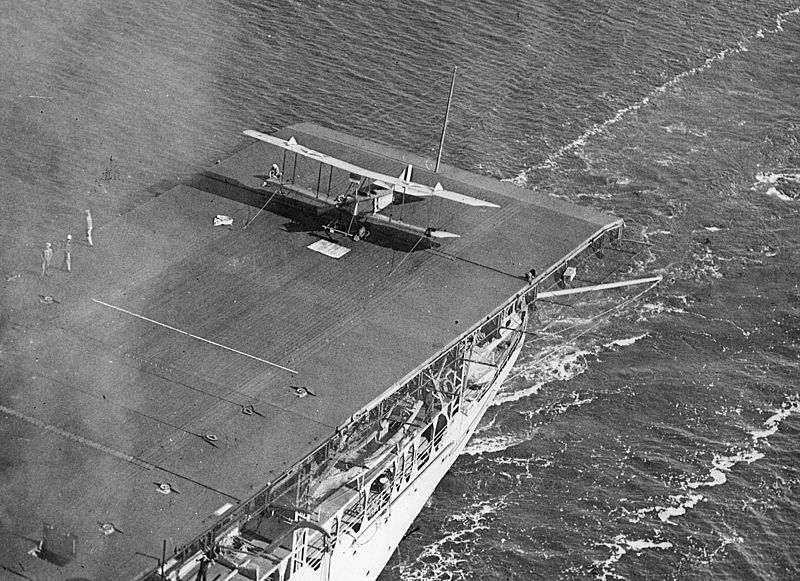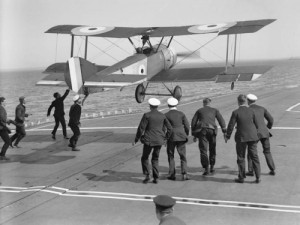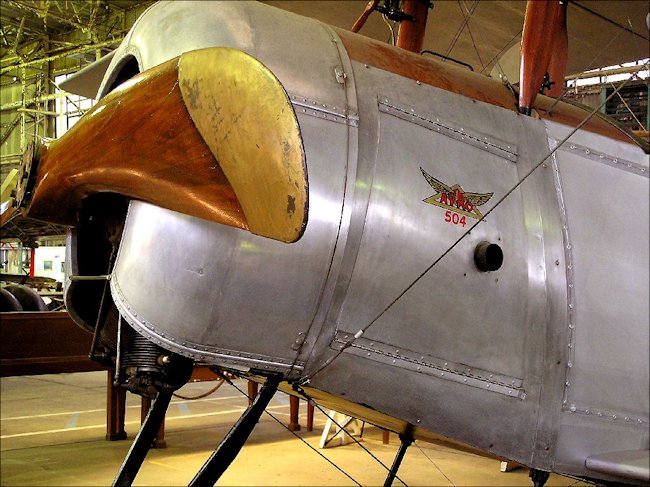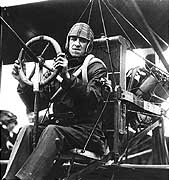The Challenge!
This year’s ModelAir event on July 20/21 at Old Warden has a special theme – the commemoration of the beginning of the Great War. As a tribute to the pioneer shipboard fliers of that conflict, Andy Housden is sponsoring a special class within Basic Carrier Deck, with special prizes for the three highest places achieved by models that represent World War One carrier aircraft.
We’ve found a number of authentic plans, photos and three-view drawings to help you construct a profile or full-bodied model to compete in this new class – these can be accessed from the RESOURCE INDEX.
Many people can’t believe that aircraft operated from ships as early as WW1, and are then amazed when they see pictures that prove it. We’re used to thinking of carrier aircraft as robust, metal monoplanes with massive piston or jet engines (and sometimes both!) but these were made from wood, fabric, dope and rigging wires. An engine failure on takeoff would mean almost certain death under the ship – no ejection seats!
The (very) Early Days
Whilst not strictly within the WW1 period (predating it by three years!) try Wikipedia for info about the Curtiss Model D (Triad) with Eugene Ely piloting in 1911 from a cockpit with no floor, top or sides, from the USS Pennsylvania! Here’s some pictures – note especially the transverse arrester wires and sandbag weights – still in use on our model carriers today!
Competition – Rule Changes for Biplanes
For our competition, all eligible aircraft found (so far) are biplanes; it is unlikely that biplane performance will match that of monoplanes, but if enough flights can be made in July it should be possible to determine a value for ‘biplane bonus points’ that will, on average, remove this performance difference. Future use of this bonus will mean that the biplanes built for the 2014 Scale Weekend can be used competitively in all future BCD contests; it is also hoped that the bonus will encourage the greater BCD use of biplanes in general. Furthermore, the ability to score unhooked landings will permit the use of the charismatic between-wars biplanes such as the Hawker Nimrod and the Fairey Flycatcher – and also even such different monoplanes as the Lockheed Hercules and the Tipsy Junior!
Are they being arrested or just stopping?
Modern full-size carriers and all known model C/L carrier decks have transverse arrester wires, as did some WW1 ships and aircraft, but others used longitudinal wires instead. This system was for retaining aircraft while parked on deck and was not primarily intended to arrest a landing, although it could have that effect. Some aircraft even had no hooks at all and relied on headwind, human “catchers” and tyre friction to stop!
WWI naval aircraft can therefore be classified a:
-
those with hooks suitable for transverse arrester wires
-
those without such hooks (irrespective of whatever other system they might have had)
Models of this type must obviously land on deck without being arrested in any way! Fortunately, this is far from impossible since it is not only prototypical but it is usually achieved by a percentage of contest flights during most events anyway. If contest history shows that it is possible to land and stop unintentionally, it is likely to be even more successful if done deliberately, especially if landing speeds are lower than normal. So, the existing BCD landing scores have been modified to allow for unhooked landings so that all the non-conventionally hooked aircraft will be become eligible to score landing points.
So what makes an aircraft eligible?
a) For a model to be eligible, an example of the full-size aircraft must have been built during World War One. At least one of the following requirements must also apply to the aircraft4:
i) The aircraft shall have been designed for deck-landing.
ii) The aircraft shall have been fitted with a deck-landing arresting system of any kind at any ime, even after the Armistice.
iii) The aircraft shall have made an actual deck landing at any time, even after the Armistice.
b) The outline of the wings, tailplane, elevators, fin, rudder and fuselage side view shall be scale; wing & tailplane dihedral, undercarriage and wing & tailplane strut geometry shall also be scale. Fuselages may be either full-scale or profile. If the fuselage is profile, then the side view of the undercarriage and of any struts joining the wing or tailplane to the fuselage shall be scale; the front view of these items may vary between maintaining the positions of fixity of such items to the fuselage and/or wing and tailplane, and maintaining the angles of such items1. Arrester hook shape, length & position need not be scale and rigging need not be present; aircraft with wheeled main undercarriages that were fitted temporarily with skids for naval flight testing may instead be modelled with wheels; aircraft that were fitted with forward-pointing undercarriage skids or hydrovanes may be modelled without these items
c) Scale appearance shall conform to evidence published by a source acceptable2 to the Contest Director: such documentation, or photocopies thereof, shall be provided for the CD if required. The CD shall undertake a brief inspection of the model without reference to such documentation; if the model appears to conform to the scale requirements described here, no further action shall be taken. If the CD is unfamiliar with the aircraft type or if model appears to be non-conformal, the CD shall make a simple visual comparison between the model and the documentation provided; if the model appears conformal, no further action shall be taken. If model appears/continues to appear to be non-conformal, the CD shall only then undertake measurements as required to determine conformality. Non-provision of scale documentation when required or a model that does not conform to the scale requirements will result in the loss of the BCD scale bonus points3.
d) Camouflage and national markings shall conform to evidence published by a source acceptable2 to the Contest Director. Conformality will be treated in exactly the same way as c) above and non-provision of such documentation when required or a model that does not conform to these requirements will result in the loss of the BCD colour scheme bonus points3.
e) Models shall otherwise conform to current BCD rules in their entirety, including maximum wing area and launch position.
Explanatory notes
1 Use of a profile fuselage for a biplane with fuselage-mounted upper wings and undercarriage means that retaining the scale position of anchorage points for such structural items as cabane
struts and u/c legs will result in non-scale angles of such items when viewed from the front or rear. This effect cannot be avoided! The modeller is therefore allowed to make his or her own choice: either retain the scale anchorage points and accept non-scale strut or leg angles, or keep the strut and leg angles constant and reposition the anchorage points, or
construct any variation between these two extremes.
2 Acceptable means the documentation has been hard-copy published, even if this is internet-sourced.
3 This special class is Scale, for reasons which are obvious. These rules are the least onerous that can be provided for the prevention of ‘scale abuse’ and for the fair treatment of other
modellers who have spent considerable effort with their own models to produce a scale appearance.
4 If the navalisation or deck landing of such aircraft is also restricted to the duration of the war, only a very small number of eligible aircraft result – and these aircraft are all British simply because, of the world powers experimenting with naval aviation at this time, the UK was the most advanced. If, however, navalisation and/or deck landing during the postwar period is allowed, then a number of French and American aircraft also become eligible since these types were war-surplus stock, examples of which were all built during the war.
RULE 10: Here’s the new section to allow unhooked landings to be scored
For models NOT fitted with arrester hooks, all arrester wires shall be removed from the deck, the landing will be assessed at the first moment of zero forward motion, and points awarded as follows:
-
Model has correct deck attitude for wheel/landing gear arrangement: 100
-
Non-conforming to 1) but has all main wheels/all main landing gear elements on deck: 80
-
Non-conforming to 1) or 2) but has at least one main wheel/main landing gear element on deck: 60
-
Non-conforming to 1), 2) or 3) but fuselage datum line has NOT passed beyond the vertical: 40
-
Non-conforming to 1), 2) or 3) and fuselage datum line HAS passed beyond the vertical: 20
-
Any part of model makes ground (“water”) contact after deck contact: 0
Your starter for 10 (Scale Points!)
Mission Briefing Extra!
-
MORE INFO PLEASE! It’s highly likely that MANY more publications and plans (and even aircraft!) exist: if you find more data or would like to add an aircraft, please email the Webmaster and contact Andy Housden on 020 8541 0186 so that we can add it to the tables, to help other builders
-
COPYRIGHT! Some drawings, plans and articles have passed into the public domain, while others have definitely not! We have done our best to credit the sources if they are known, but will have to remove any material if we find that its use on the site contravenes copyright
…and Finally!
If you would like to build a model for this special class but do not have access to the listed documentation or cannot obtain suitable data from other sources, please contact Andy, who may be able to loan you the relevant information from most of the documents in the Resource Index

